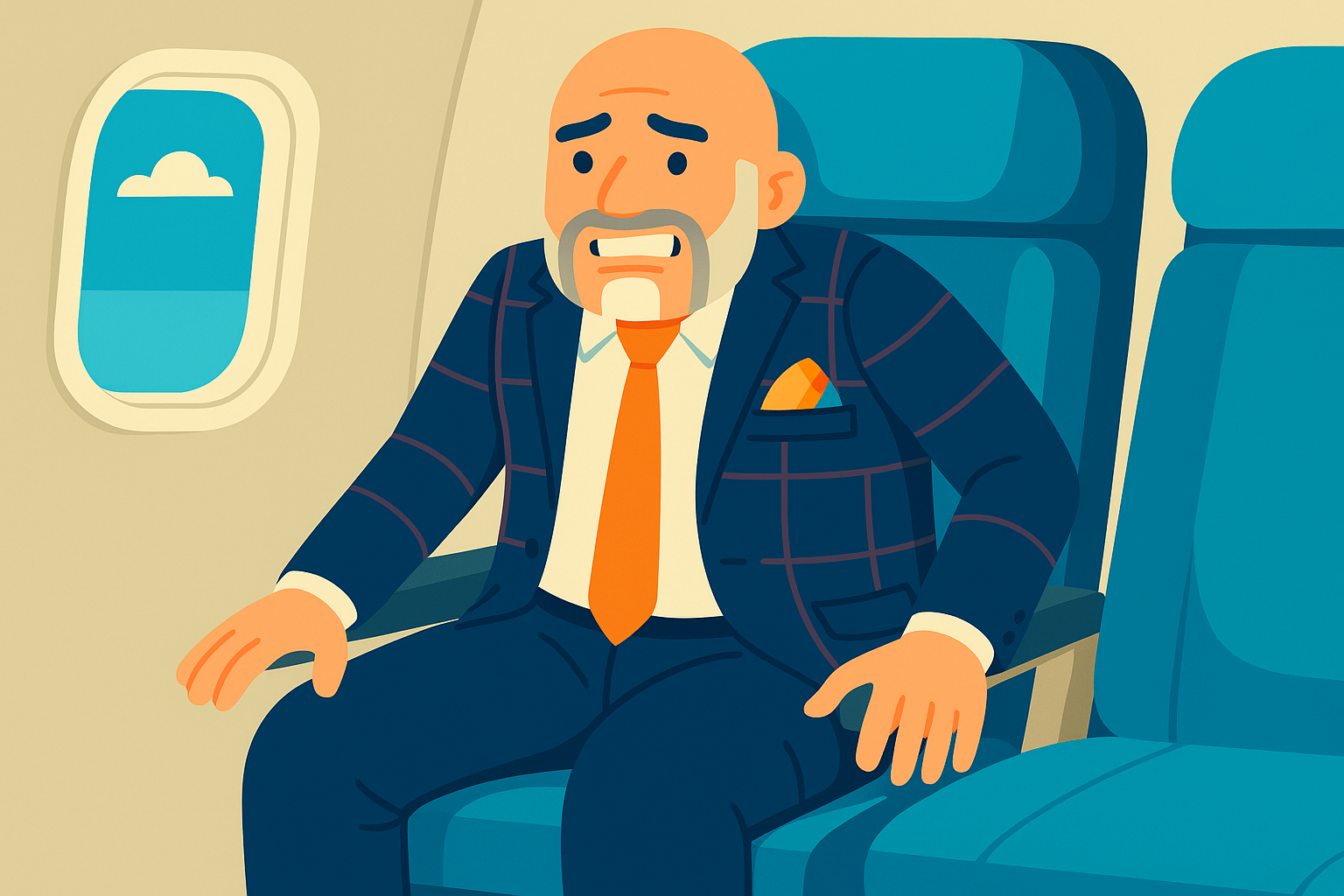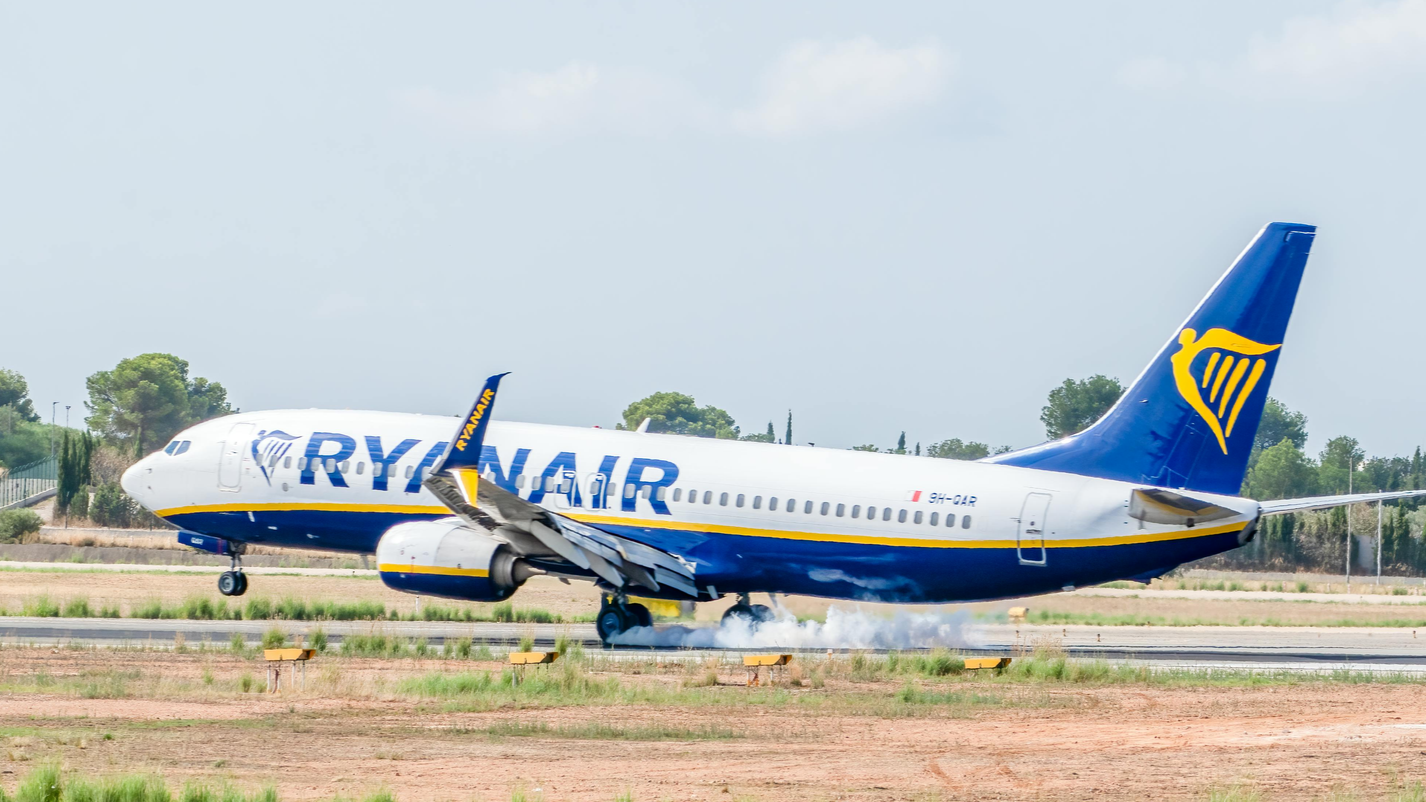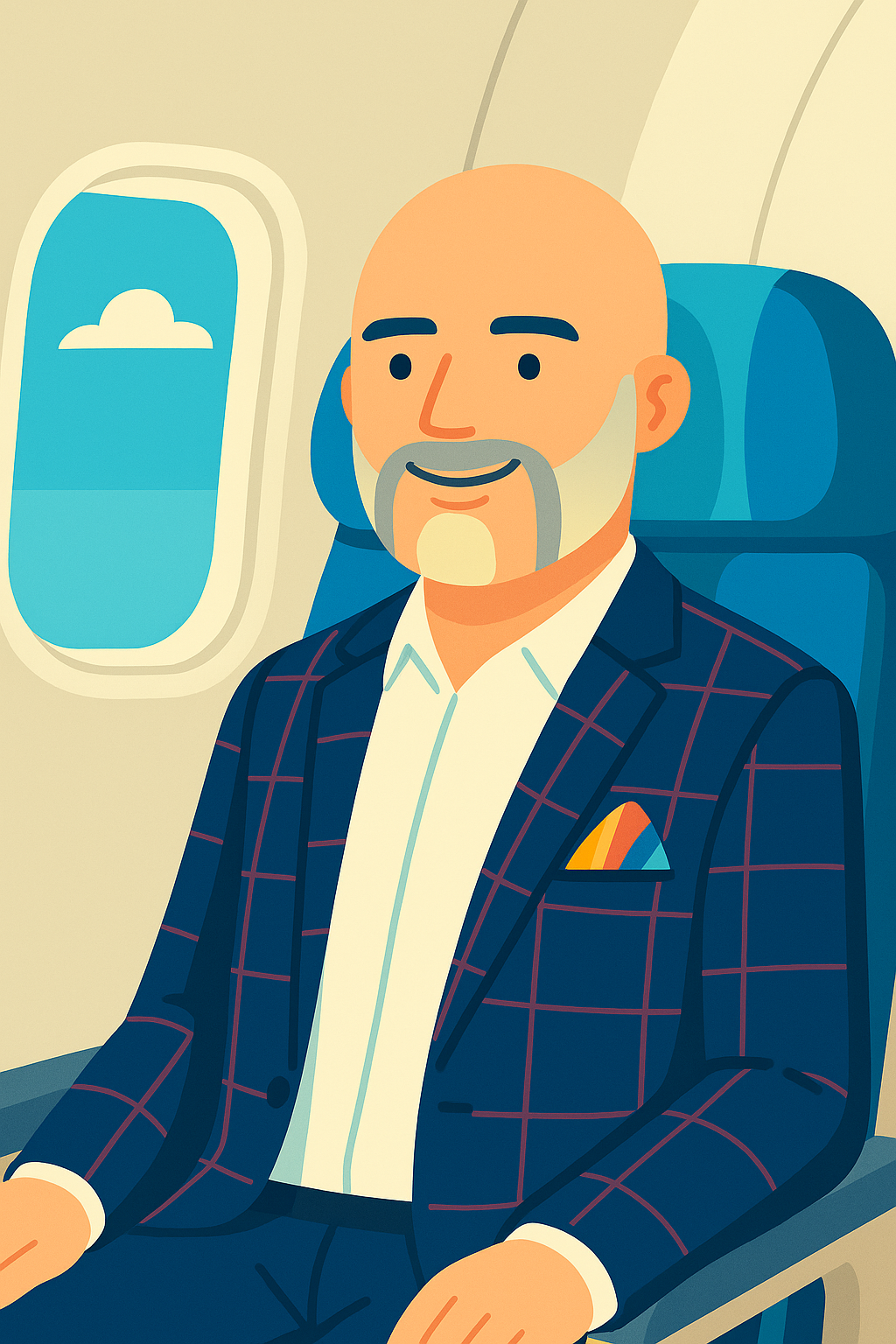How I Get Extra Legroom on Flights Without Paying Extra
How I Get Extra Legroom on Flights Without Paying Extra

I may only be 5 ft 11, but I’ve got legs my female friends would kill for: apparently I have legs for tights - not flights! So unfortunately, they’re a curse when it comes to flying. I’ve lost count of how many hours I’ve spent wedged into economy seats, knees grazing the tray table, silently wondering whether I should have booked Business Class instead of another “bargain break.”
Over the years, though, I’ve picked up a few tricks of the trade. Because while airlines would love you to believe that comfort costs extra, it turns out you can often find extra legroom on flights without paying the premium. Sometimes, all it takes is knowing where to sit — and which side of the plane to choose.
Why Seat Selection Matters More Than You Think
Most people think economy seating is all the same. Spoiler: it isn’t. The distance from one seat to the one in front — known as seat pitch — can vary by as much as two inches within the same aircraft.
That might not sound like much, but trust me, an inch or two can make a world of difference when you’re trying to uncross your knees halfway through a flight to Tenerife.
Seat pitch is how airlines describe legroom: it’s the distance between a point on one seat and the same point on the seat in front. The bigger the pitch, the more space you’ve got to stretch those enviable limbs.
Some of this variation comes down to cabin design and where the galley or exit rows fall. But sometimes, it’s just that one side of the aircraft has a different configuration — and that’s where we can find a little hidden comfort.
The Airlines with Hidden Extra Legroom
Let’s dive into where you can sneak a little more space without paying the full “extra legroom” seat fee.
Ryanair — Small Inches, Big Difference

Ryanair might not be everyone’s first thought for comfort, but they’ve got a little secret. On their Boeing 737-800s, the right-hand seats (D, E and F) in rows 3 to 15 offer half an inch more legroom than the left-hand side.
That might sound tiny, but if you’re flying a few hours, you’ll feel the difference.
Better yet, you can usually book those seats from around £4.50 — compared to about £12 for the official “extra legroom” rows.
Ryanair’s official word:
“Your average seat pitch is 29 inches, one inch more than the industry standard of 28.”
So next time you’re booking, remember: right is right!
✈️ If you’d rather not spend your evening squinting at seat maps, I can help you find those perfect right-hand rows when I book your flights through Jamie Wake Travel — comfort and savings combined.
easyJet — Sit Right to Feel Right

On easyJet’s Airbus A321neo aircraft, the right-hand side wins again. In rows 3 to 17, seats D-F have a 29-inch pitch, while those on the left can dip down to 28 inches in later rows.
Even their Airbus A320-214 models offer an edge: you’ll get around half an inch more on the right side (rows 14–29).
Standard seat selection starts from just 99p, while “extra legroom” seats begin at £7.99 — so knowing which standard rows offer the bonus inch can save you a tidy sum (and a bruised knee).
At Jamie Wake Travel, we often pre-check the aircraft type for our clients, so we can quietly reserve those “best in class” rows before check-in even opens.
Norwegian — Know Your Aircraft

Flying Norwegian? Your comfort depends on whether you’re in a Boeing 737-800 (189 seats), 737 MAX 8, or 737-800 (186 seats).
- On the 189-seat and MAX 8 versions, you’ll find extra room on the right-hand side, rows 3–14.
- On the 186-seat model, it’s the left-hand side, rows 2–13.
That’s roughly an inch more pitch, which is a lot when your knees usually touch the seatback pocket.
Seat reservation starts at £9.99, but Norwegian includes seat choice with most ticket types except LowFare.
I love Norwegian’s attitude: they don’t charge extra solely for legroom — it’s just part of how they configure their planes. So if you like to know exactly what you’re getting, this is a great mid-range choice.
British Airways — Subtle Comfort Upgrades

You’d expect BA to be generous, right? On some aircraft, yes — but not all.
If you’re flying long-haul on a Boeing 787-8 (Type 78E), aim for seats HJK in rows 22–24 and 31–34. They offer about 32.4 inches of legroom compared to the usual 31. Avoid ABC in rows 23–25, where it drops to 30.5 inches.
On short-haul flights (Airbus A320 or A320neo), skip row 30 — it’s tighter at 28 inches. If you’re on an A321 (Type 21V), the sweet spot is rows 15–22, around 30.1 inches versus the standard 29.
I always tell clients: BA is consistent, but not identical. Knowing your aircraft type before check-in is the key to comfort.
Aer Lingus — A Lucky Inch and a Half

The Irish flag carrier hides its comfort in plain sight. On the Airbus A321-253NX, the best legroom in economy is in rows 7–13 — a roomy 32 inches.
Further back (rows 22–34), you’ll still get 32 inches on the right-hand side (DEF) versus 30.5 inches on the left. The same applies to their A321-253NY.
Seat selection starts around €4.99 (£4.30) — not bad for comfort you can actually feel.
Whenever I book Aer Lingus flights for clients, I quietly nudge them toward those DEF seats. It’s a small touch that makes a long-weekend hop to Dublin or Boston just that bit nicer.
Jet2 — Mind the Left Side

On Jet2’s Airbus A321 CEO, standard seats average 28.5 inches — except on the left-hand side between rows 28–38, where it shrinks to 28 inches.
So if you can, choose the right-hand side to avoid feeling hemmed in. Jet2 lets you pick seats for a “small charge,” but it’s worth it if it means a more comfortable start to your holiday.
Wizz Air — It’s All About the Row

Unlike the others, Wizz doesn’t play favourites between left and right — but the row number makes all the difference.
- On Airbus A320-232, rows 2–11 give you 29 inches, while rows 14–31 drop to 28.
- On Airbus A321-271NX, rows 2–6 have 29 inches, rows 7–17 and 20–23 have 28, and rows 24–28 (right side only) jump back to 29.
Confused yet? Don’t worry — I check these layouts every time I book Wizz Air for a client. The difference between arriving relaxed or cramped is just a few seat numbers away.
How to Find the Best Seats on Any Flight
So now you know where airlines hide their roomy rows — but how do you check for yourself before you fly?
- Find your aircraft type.
Look on your booking confirmation or the airline’s “manage my booking” page. You’re looking for something like Boeing 737-800 or Airbus A321neo. - Visit AeroLOPA.
It’s a free online portfolio of seating plans for most major airlines. Scroll to your aircraft model and you’ll see detailed seat layouts, including seat pitch data (that magic legroom measurement). - Cross-check with SeatGuru or the airline’s own seat map.
These tools often include traveller reviews highlighting which seats feel more spacious or have awkward window alignments. - Check in early.
Most budget airlines open online check-in 30 days before departure if you’ve paid to choose your seat — or 24–48 hours if not. The earlier you check in, the more chance you’ll nab the right-hand side rows we’ve talked about. - Use the airline app.
Apps often show live seat maps; you can even switch seats if new ones open up closer to departure.
✈️ If that all sounds like a faff, don’t worry — I do this legwork for my clients at Jamie Wake Travel. We double-check aircraft types, cross-reference layouts, and secure the comfiest standard seats before you’ve even packed your suitcase.
Jamie Says:
“Comfort shouldn’t cost extra. Whether you’re flying to Tenerife or Toronto, there’s always a sweet spot on the plane if you know where to look. I may have long legs, but I’ve learned that smart seat choices make all the difference — and I’m here to help you find yours.”
Jamie Wake

Booking Protection and Peace of Mind
One of the biggest reasons my clients book flights through Jamie Wake Travel is peace of mind. Every booking we make comes with:
- ATOL Protection – safeguarding your money if an airline or supplier fails.
- Supplier Failure Insurance – extra cover many online deals don’t include.
- Personal service – you talk to a real person who genuinely wants you to have a smooth journey (and decent legroom!).
So even if a schedule changes or your aircraft type switches, we’ll re-check your seats and make sure you’re still comfortable — no call-centre queues, no stress.
Why Book Through Jamie Wake Travel
When you book direct with airlines, you’re just another seat number. When you book through me, you get tailored advice and a human touch.
I love finding those clever little upgrades — the “secret” rows, the seats that recline more, the side of the plane where the aisle’s fractionally wider. I’ll handle all that so you can simply sit back and look forward to your break.
And if you fancy creating your own bespoke trip, you can use the search tool on our website to build holidays as unique as you are. Or call me on 01495 400005 — I’m always happy to chat travel.
Share the Secret
Go on — share this post with your fellow travellers. Everyone loves a free travel hack, and who doesn’t want extra legroom on flights without spending a penny more?
Send an Enquiry
We will get back to you as soon as possible.
Please try again later.
Frequently Asked Questions: Extra Legroom on Flights
How can I check which plane I’m flying on?
Look at your booking confirmation or the airline’s “Manage My Booking” page.
Is it worth paying for extra legroom?
Sometimes, yes — but with a bit of research, you can often get similar space for less.
Are emergency-exit seats always better?
They have the most space, but they come with restrictions (you must be fit and able to assist in an emergency).
Which airlines offer the most legroom overall?
BA, Aer Lingus, and Norwegian generally lead, though it varies by aircraft.
How early can I check in to choose a seat?
Budget airlines usually open seat selection 30 days before departure if you pay, or 24–48 hours if you don’t.
What is seat pitch?
Seat pitch is the distance from one seat to the same point on the one in front — essentially, your legroom.
Do budget airlines really differ in comfort?
Yes! Even half an inch makes a noticeable difference, and layouts vary widely.
How can I sit next to my travel partner without paying?
Check in together as early as possible, or let me handle the booking so seats are linked correctly.
Does using a travel agent help with better seating?
Absolutely. I can see seat maps, know aircraft types, and often secure specific seats for you.
Can I request specific seats after booking?
Yes — most airlines let you upgrade or change seats later for a small fee, or sometimes for free at check-in.













